From the Archives: Iran
Jan 2, 2023 22:33:23 #
HamBar06
Loc: Philadelphia, PA
Hello, I hope you will bear with me when viewing photos. I still have trouble with my computer which seems to decide which shots it will allow me to save original for downloading in the postings. Some (on my screen) appear to be not very sharp, and on the ones you can download they become smaller and sharper. I don't know if any of this applies to your view of photos.
I spent the summer of 1970 in Iran with the U. Penn Archaeology team digging at Hasanlu. My wife (then fiance) joined me in Tehran in September and we traveled around for two more weeks. Most of the photos here are from that time period. I hope you find them interesting.
ISFAHAN is a major city in the Isfahan Province, Iran. It is located 273.27 miles south of Tehran and is the capital of Isfahan Province. The city is the third-largest city in Iran, after Tehran and Mashhad, and the second-largest metropolitan area.
Isfahan is located at the intersection of the two principal routes that traverse Iran, north–south and east–west. Under the Safavid dynasty, Isfahan became the capital of Persia, for the second time in its history, under Shah Abbas the Great. The city retains much of its history and it is famous for its Perso–Islamic architecture, grand boulevards, covered bridges, palaces, tiled mosques, and minarets. It also has many historical buildings, monuments, paintings, and artifacts. Naqsh-e Jahan Square in Isfahan is one of the largest city squares in the world, and UNESCO has designated it a World Heritage Site.
TABRIZ is a city in northwestern Iran, serving as the capital of East Azerbaijan Province. It is the sixth-most-populous city in Iran. Tabriz's elevation ranges between 4,430 and 5,250 ft above sea level. The valley opens up into a plain that gently slopes down to the eastern shores of Lake Urmia, 37 mi to the west. With cold winters and temperate summers, Tabriz is considered a summer resort.
Tabriz is the largest economic hub and metropolitan area in northwest Iran. The population is bilingual, speaking Azerbaijani and Persian.It is a major heavy industries hub for automobiles, machine tools, refineries, petrochemicals, textiles and cement production industries. The city is famous for its handicrafts, including hand-woven rugs and jewellery. Local confectionery, chocolate, dried nuts and traditional Tabrizi food. It is also an academic hub and a site for some of the most prestigious cultural institutes in Northwest Iran.
Located here is the grand Bazaar of Tabriz, designated a World Heritage Site.
SHIRAZ is founded in Pars Province, a central area for Persian civilization. The earliest reference to Shiraz is on Elamite clay tablets dated to 2000 BC, found in June 1970 during digging for the construction of a brick kiln in the southwest corner of the city.
The city became a provincial capital in 693, after the Arabs conquered Istakhr, the nearby Sassanian capital. As Istakhr fell into decline, Shiraz grew in importance under the Arabs and several local dynasties.
Throughout the Safavid empire (1501–1722) Shiraz remained a provincial capital Shah Abbas I, constructed many palaces and ornate buildings. In 1979, the Islamic regime demolished the beautifully restored house that had belonged to Sayyid 'Ali Muhammad Shirazi, the Bab, and built a mosque on the site.
Agriculture is a major part of the economy in and around Shiraz, partially due to a relative abundance of water compared to the surrounding deserts. The Gardens of Shiraz and "Evenings of Shiraz" are famous throughout Iran and the middle east. The moderate climate and the beauty of the city has made it a major tourist attraction.
Shiraz is also home to many Iranian Jews, although most have immigrated to the United States and Israel in the last half of the twentieth century, after the Islamic Revolution.
PERSEPOLIS was the ceremonial capital of the Achaemenid Empire (c. 550–330 BC), situated in the plains of Marvdasht, encircled by southern Zagros mountains of the Iranian plateau. The earliest remains of Persepolis date back to 515 BC. It exemplifies the Achaemenid style of architecture. UNESCO declared the ruins of Persepolis a World Heritage Site in 1979.
The complex is raised high on a walled platform, with five "palaces" or halls of varying size, and grand entrances. The function of Persepolis remains unclear. It appears to have been a grand ceremonial complex that was only occupied seasonally. The complex was taken by the army of Alexander the Great in 330 BC, and soon after the wooden parts were completely destroyed by fire, very likely deliberately.
NAQSH-e-ROSTAM is an ancient archeological site and necropolis located northwest of Persepolis, in Fars Province, a collection of ancient Iranian rock reliefs are cut into the face of the mountain and the mountain contains the final resting place of four Achaemenid kings, notably king Darius the Great and his son, Xerxes.
This site is of great significance to the history of Iran and to Iranians, as it contains various archeological sites carved into the rock wall through time for more than a millennium from the Elamites and Achaemenids to Sassanians. It lies a few hundred meters from Naqsh-e Rajab, with a further four Sassanid rock reliefs, three celebrating kings and one a high priest.
Thank you all for looking.
L.Biond
I spent the summer of 1970 in Iran with the U. Penn Archaeology team digging at Hasanlu. My wife (then fiance) joined me in Tehran in September and we traveled around for two more weeks. Most of the photos here are from that time period. I hope you find them interesting.
ISFAHAN is a major city in the Isfahan Province, Iran. It is located 273.27 miles south of Tehran and is the capital of Isfahan Province. The city is the third-largest city in Iran, after Tehran and Mashhad, and the second-largest metropolitan area.
Isfahan is located at the intersection of the two principal routes that traverse Iran, north–south and east–west. Under the Safavid dynasty, Isfahan became the capital of Persia, for the second time in its history, under Shah Abbas the Great. The city retains much of its history and it is famous for its Perso–Islamic architecture, grand boulevards, covered bridges, palaces, tiled mosques, and minarets. It also has many historical buildings, monuments, paintings, and artifacts. Naqsh-e Jahan Square in Isfahan is one of the largest city squares in the world, and UNESCO has designated it a World Heritage Site.
TABRIZ is a city in northwestern Iran, serving as the capital of East Azerbaijan Province. It is the sixth-most-populous city in Iran. Tabriz's elevation ranges between 4,430 and 5,250 ft above sea level. The valley opens up into a plain that gently slopes down to the eastern shores of Lake Urmia, 37 mi to the west. With cold winters and temperate summers, Tabriz is considered a summer resort.
Tabriz is the largest economic hub and metropolitan area in northwest Iran. The population is bilingual, speaking Azerbaijani and Persian.It is a major heavy industries hub for automobiles, machine tools, refineries, petrochemicals, textiles and cement production industries. The city is famous for its handicrafts, including hand-woven rugs and jewellery. Local confectionery, chocolate, dried nuts and traditional Tabrizi food. It is also an academic hub and a site for some of the most prestigious cultural institutes in Northwest Iran.
Located here is the grand Bazaar of Tabriz, designated a World Heritage Site.
SHIRAZ is founded in Pars Province, a central area for Persian civilization. The earliest reference to Shiraz is on Elamite clay tablets dated to 2000 BC, found in June 1970 during digging for the construction of a brick kiln in the southwest corner of the city.
The city became a provincial capital in 693, after the Arabs conquered Istakhr, the nearby Sassanian capital. As Istakhr fell into decline, Shiraz grew in importance under the Arabs and several local dynasties.
Throughout the Safavid empire (1501–1722) Shiraz remained a provincial capital Shah Abbas I, constructed many palaces and ornate buildings. In 1979, the Islamic regime demolished the beautifully restored house that had belonged to Sayyid 'Ali Muhammad Shirazi, the Bab, and built a mosque on the site.
Agriculture is a major part of the economy in and around Shiraz, partially due to a relative abundance of water compared to the surrounding deserts. The Gardens of Shiraz and "Evenings of Shiraz" are famous throughout Iran and the middle east. The moderate climate and the beauty of the city has made it a major tourist attraction.
Shiraz is also home to many Iranian Jews, although most have immigrated to the United States and Israel in the last half of the twentieth century, after the Islamic Revolution.
PERSEPOLIS was the ceremonial capital of the Achaemenid Empire (c. 550–330 BC), situated in the plains of Marvdasht, encircled by southern Zagros mountains of the Iranian plateau. The earliest remains of Persepolis date back to 515 BC. It exemplifies the Achaemenid style of architecture. UNESCO declared the ruins of Persepolis a World Heritage Site in 1979.
The complex is raised high on a walled platform, with five "palaces" or halls of varying size, and grand entrances. The function of Persepolis remains unclear. It appears to have been a grand ceremonial complex that was only occupied seasonally. The complex was taken by the army of Alexander the Great in 330 BC, and soon after the wooden parts were completely destroyed by fire, very likely deliberately.
NAQSH-e-ROSTAM is an ancient archeological site and necropolis located northwest of Persepolis, in Fars Province, a collection of ancient Iranian rock reliefs are cut into the face of the mountain and the mountain contains the final resting place of four Achaemenid kings, notably king Darius the Great and his son, Xerxes.
This site is of great significance to the history of Iran and to Iranians, as it contains various archeological sites carved into the rock wall through time for more than a millennium from the Elamites and Achaemenids to Sassanians. It lies a few hundred meters from Naqsh-e Rajab, with a further four Sassanid rock reliefs, three celebrating kings and one a high priest.
Thank you all for looking.
L.Biond
Isfahan: Great Bazaar.
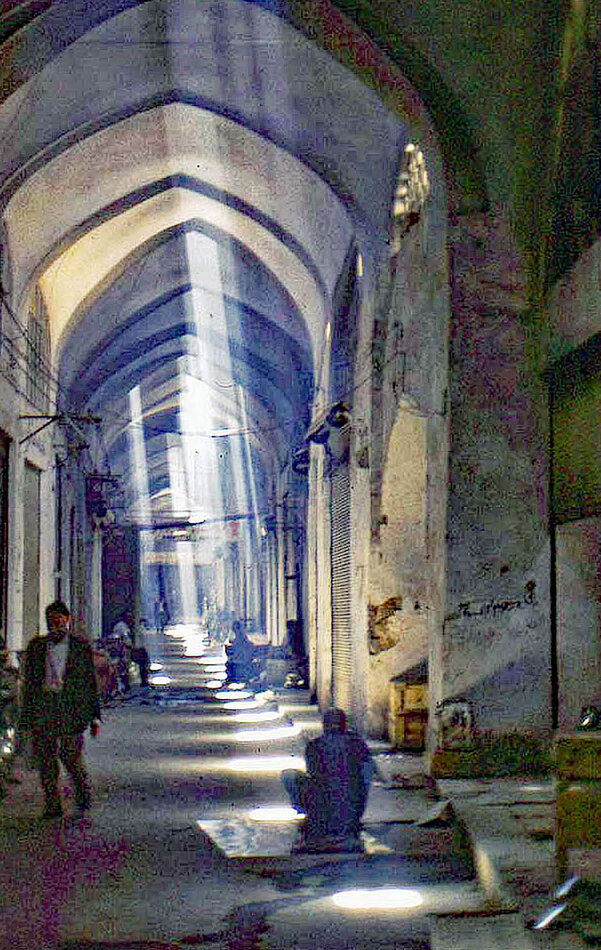
(Download)
Isfahan: Masjid-I-Shah ca 1637.
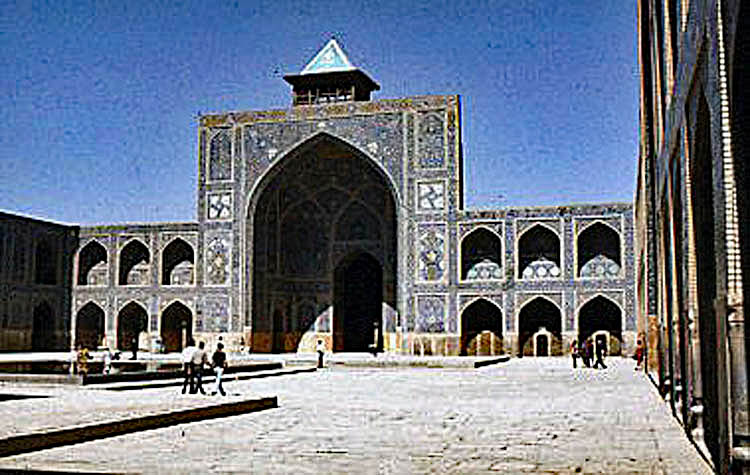
Isfahan: Chahar Bagh School.
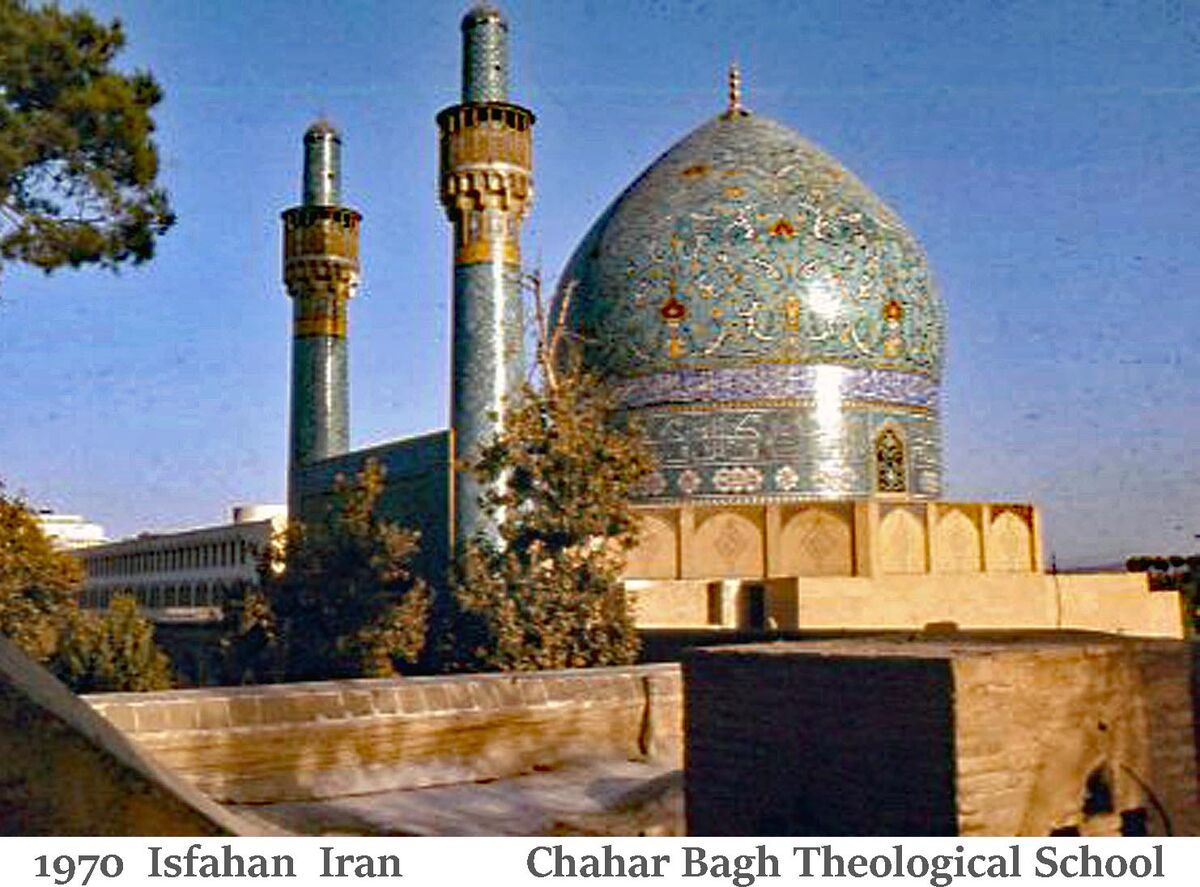
(Download)
Tabriz: Typical Street Scene.
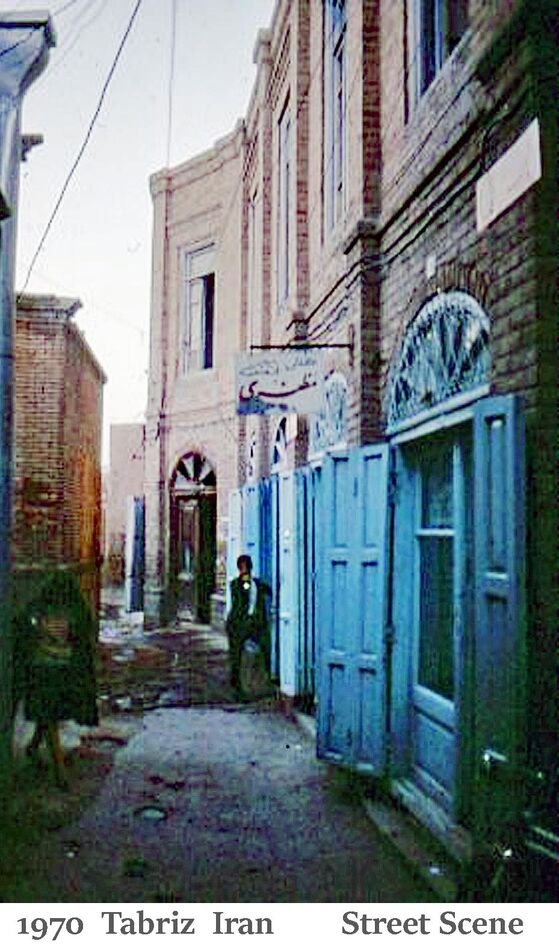
(Download)
Shiraz: Shop outside the Bazaar.
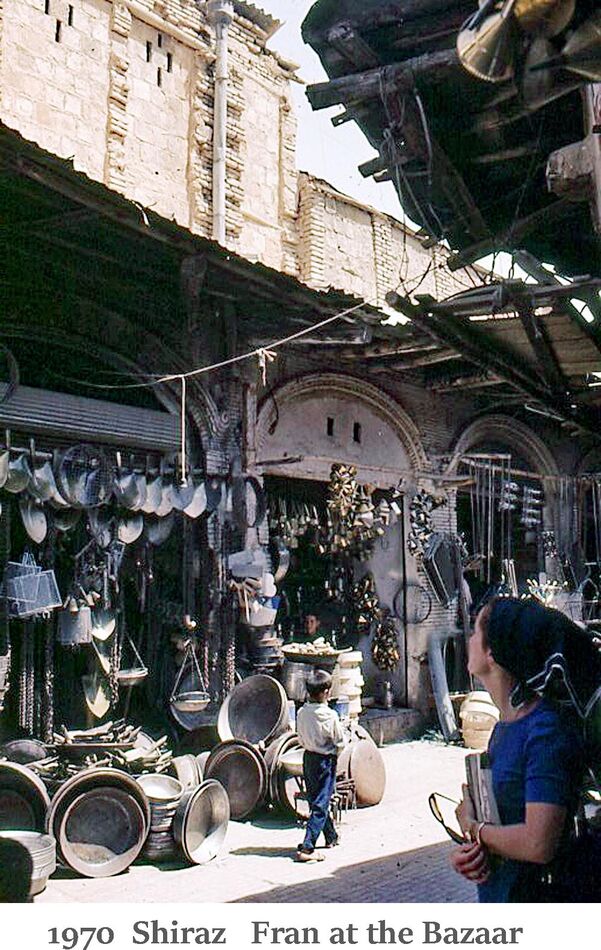
(Download)
Persepolis: Ruins.
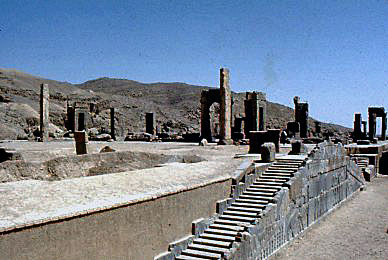
Persepolis: Bas-relief on Northern Stair to the Apadana 5th C. BC.
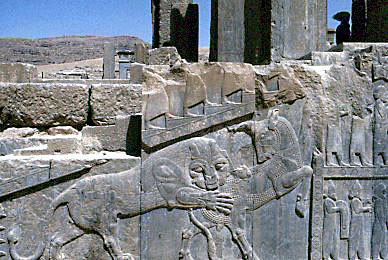
Persepolis: Taking shelter from sun & 120 temperature.
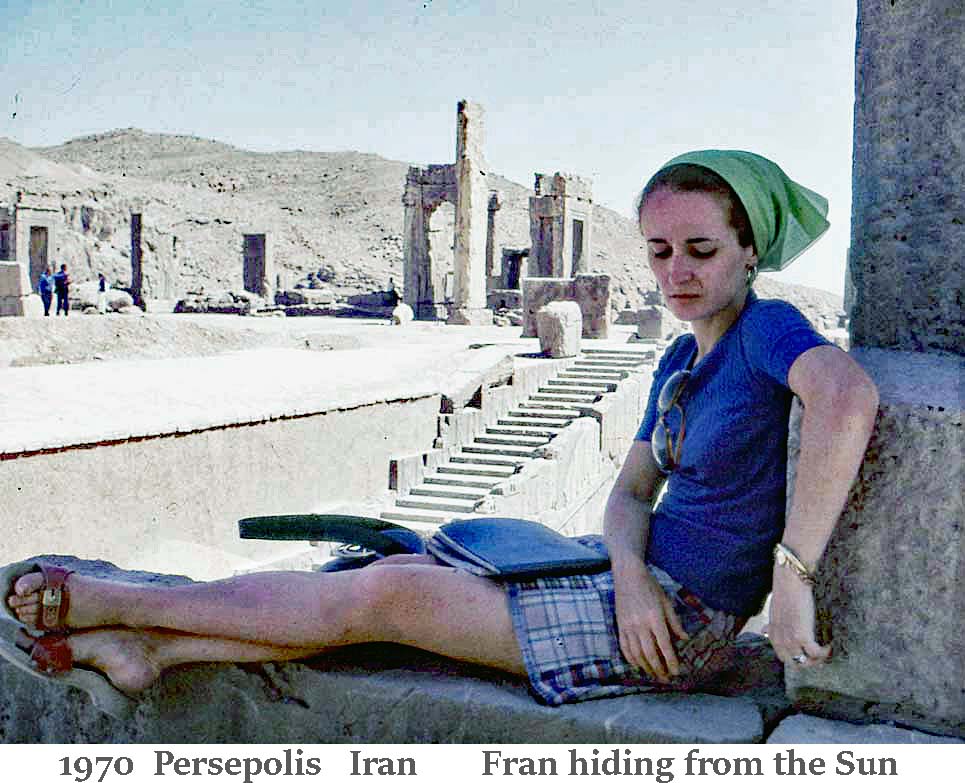
Persepolis: Lion Gate.

(Download)
Naqsh-I-Rustam Tomb of Xerxes I Detail of decoration.
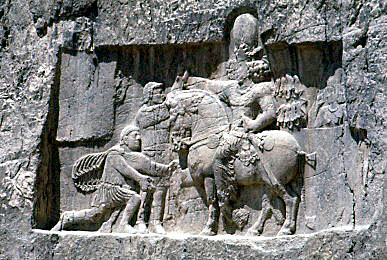
Jan 2, 2023 22:42:06 #
Jan 3, 2023 05:24:42 #
Jan 3, 2023 07:59:15 #
Jan 3, 2023 08:06:44 #
HamBar06 wrote:
Hello, I hope you will bear with me when viewing ... (show quote)
Nice window into a different time and place!
Thanks for sharing.
Jan 3, 2023 09:25:18 #
Jan 3, 2023 09:25:58 #
Jan 3, 2023 09:26:46 #
Jan 3, 2023 09:27:40 #
HamBar06
Loc: Philadelphia, PA
srsincary wrote:
Nice window into a different time and place!
Thanks for sharing.
Thanks for sharing.
Thank you,
Larry B.


Jan 3, 2023 09:35:37 #
Jan 3, 2023 09:46:52 #
Jan 3, 2023 10:14:12 #
Jan 3, 2023 10:46:28 #
Jan 3, 2023 18:10:06 #
HamBar06 wrote:
Hello, I hope you will bear with me when viewing ... (show quote)
Thanks for the magnificent tour 🎈🎈🌞🎈🎈
Jan 3, 2023 19:45:30 #
If you want to reply, then register here. Registration is free and your account is created instantly, so you can post right away.






